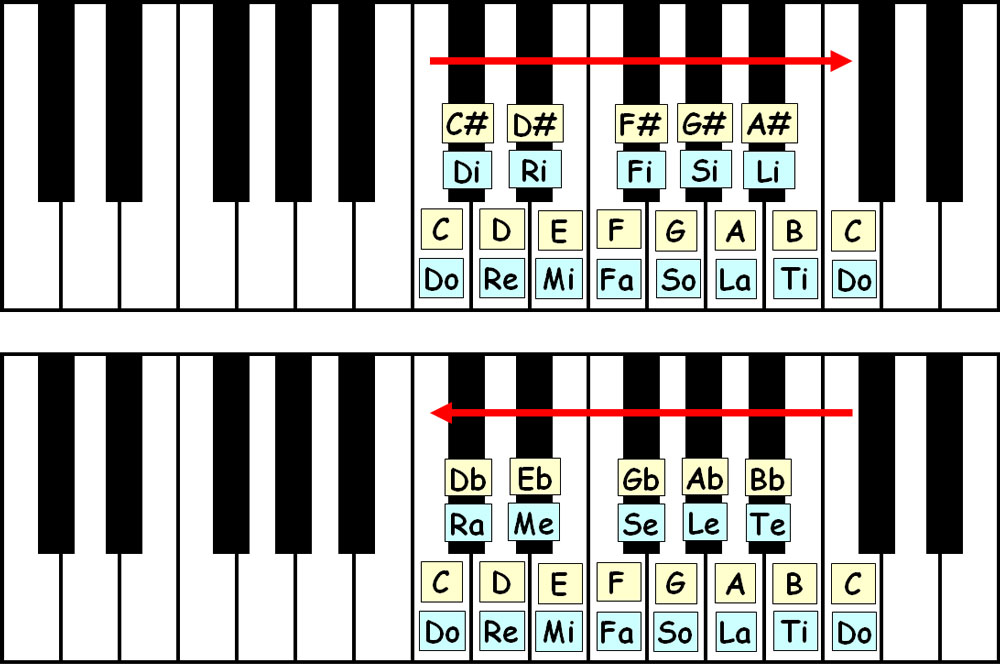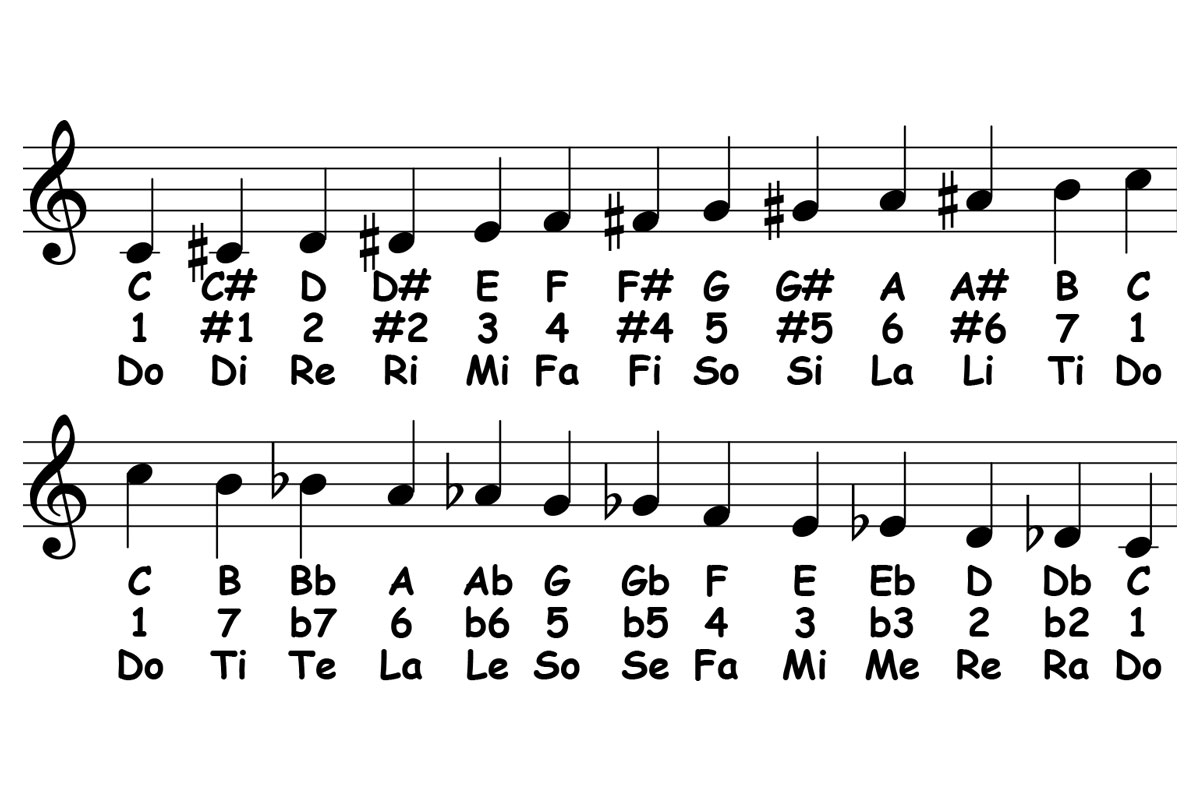The Chromatic Scale includes all twelve possible pitches played as a sequence of minor 2nds…
Chromatic Scale in the Key of C
It is common practice to name the “Chromatic” notes using sharps when ascending and flats when descending as follows…


- The scale structure of the Chromatic Scale is always 1-#1-2-#2-3-4-#4-5-#5-6-#6-7-1 ascending and 1-7-b7-6-b6-5-b5-4-3-b3-2-b2-1 descending, no matter what key you are in.
- The Solfege syllables of the Chromatic Scale are always Do-Di-Re-Ri-Mi-Fa-Fi-So-Si-La-Li-Ti-Do ascending and Do-Ti-Te-La-Le-So-Se-Fa-Mi-Me-Re-Ra-Do descending, no matter what key you are in.
- The only thing that changes when you change keys are the letter names.
- Pronunciation Hints: Di, Ri, Fi, Si, and Li sound like “Dee”, “Ree”, “Fee”, “See”, and “Lee” and Me, Se, Le, and Te sound like “May”, “Say”, “Lay”, and “Tay”.
- Notice that each “chromatic” Solfege name begins with exact same consonant as the diatonic note that it is derived from!
Solfege Ear Training
Reading, playing, and singing the Solfege Syllables out loud is an extremely effective way to tune up your ears and to internalize the unique sound-feeling of each note in the scale with respect to the key center Do. Make sure to do this slowly enough for the unique sound-feeling of each Solfege Syllable to make a meaningful impression on your mind’s ear.
C Chromatic Scale: Linear, Ascending…

C Chromatic Scale: Linear, Descending…

Special Notes
- For now, don’t worry about why the names of the Chromatic notes depend on the direction you are going. Such a theoretical subtlety will be explained in your more advanced studies of scales, chords, chord progressions, and real music.
- Naming notes using letters, scale degrees, or Solfege syllables is NOT a necessary performance skill. The ultimate goal is to abandon the use of names altogether. Names are just a temporary way for us to communicate with each other while training our ears, intellect, eyes, and muscles.
learn more… Scales

Leave a Reply